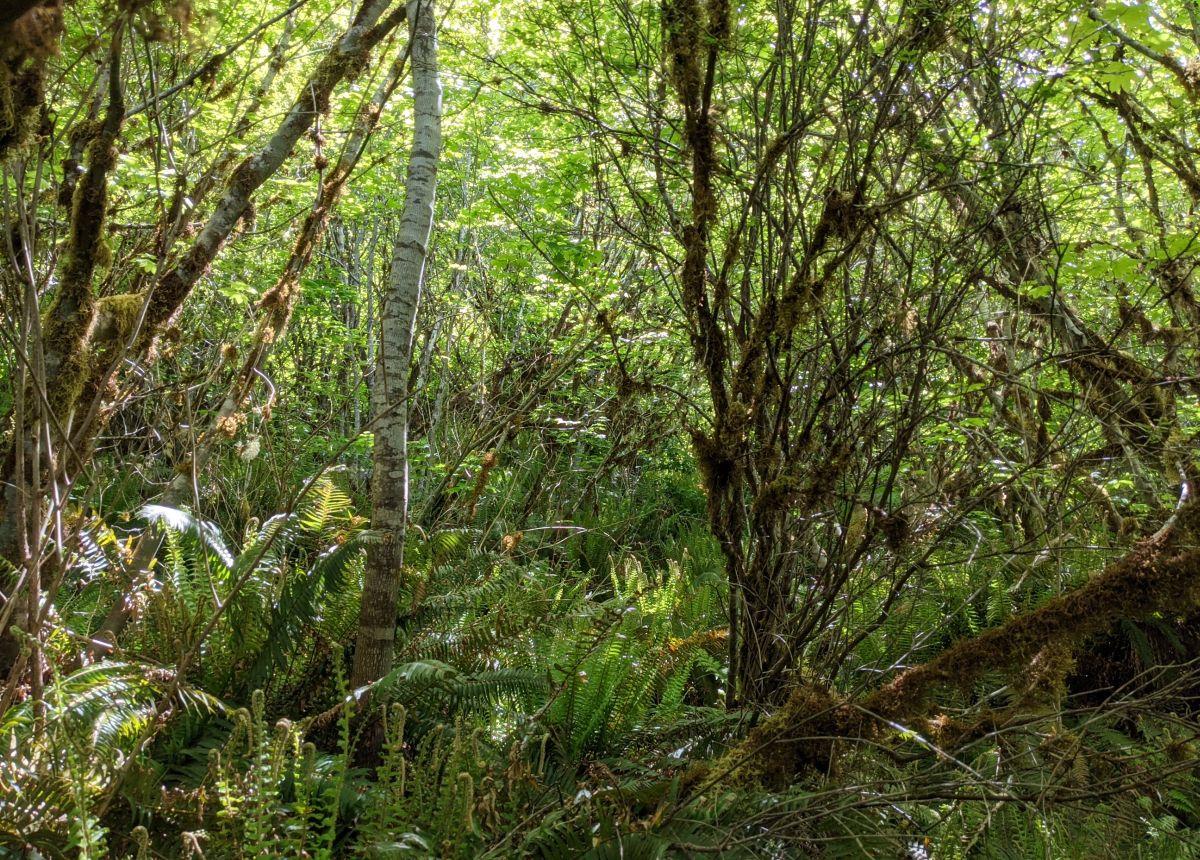Special Stewardship Opportunities
Sat, June 18, 2022

One of my favorite types of work with Resilient Forestry is helping small private landowners manage their forests. I enjoy it because each landowner is unique: their objectives for forest management vary, as do their personalities, backgrounds, and ways of interacting. Each project requires innovative thinking and facilitates getting to know a new person.
Last year, I had the pleasure of writing a stewardship plan for a new landowner on the southwest Olympic Peninsula. The property consisted of two distinct parts: a young plantation of Douglas-fir and a powerline right-of-way dominated by sword fern. Our job was to inventory the vegetation and determine management options that would promote the landowner’s goals of supporting diverse ecosystems, sequestering carbon, and generating economic value to pay for management. The landowner was also interested in new and experimental approaches.
In the young forest, we established fixed-radius plots and measured trees, snags, logs, and understory plants. These data allowed us to understand how the forest was functioning ecologically, and whether and how harvesting some trees could benefit both forest health and ongoing management. We found that the 40-acre stand was very dense and uniform, with no snags and very little understory vegetation or downed wood. It was also highly productive, with fast growth rates – all excellent conditions for a timber plantation, but not-so-excellent for ecosystem diversity. Thinning in a variable pattern in 5–10 years would promote structural diversity and provide income for additional management, such as planting western redcedar and Sitka spruce. There are also options for more income or for more ecosystem-focused treatments, and for pursuing carbon credits.
.jpg) 1.jpg) |
.jpg) 1.jpg) |
In the powerline right-of-way, our goal in the field was to characterize and map the plant communities and soils. With my background in botany, I found this particularly fun. We found the breaks between vegetation types, and in sample plots, identified the dominant plant species, looked for erosion, and dug small pits to measure soil horizons and plant roots.
Based on field and geospatial data, we delineated eight plant communities. The vine maple forest served the most ecological functions – and was the most beautiful – with a rich herbaceous understory, carbon-rich soil, and wildlife hiding cover. The Himalayan-blackberry monoculture along the stream had the most potential for improvement: converting to native riparian shrubs would provide excellent wildlife habitat. And the areas dominated by sword fern and scotch broom could be allowed to transition to vine maple forest, if an agreement on vegetation height could be reached with the powerline company.
In the end, we discovered an array of interesting management opportunities on the property. There is lots of potential to increase ecological value by enhancing the structural diversity of the forest and expanding wildlife habitat in the right-of-way. But what really creates the opportunity is the landowner’s passion for their unique property. Their attentive management will result in effective, and exciting, stewardship outcomes in the years to come.

